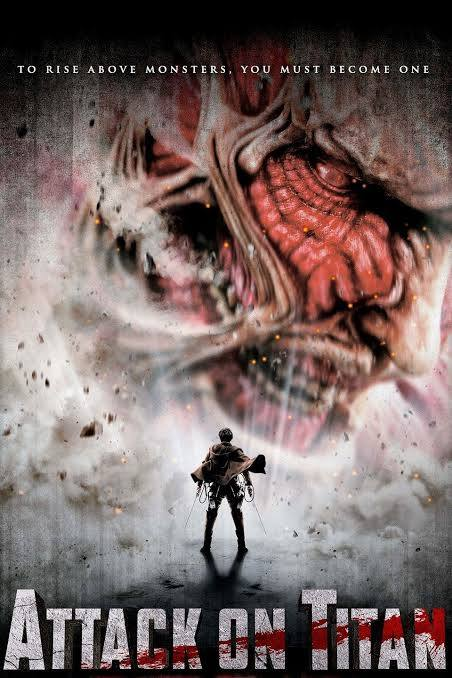Attack on Titan Part 1

Movie Info:
🎥 Synopsis
In Attack on Titan: Part 1, humanity remains alive in a walled world to protect them from the titans, towering grotesque beings who seemingly devour humans for no reason. Life goes on in the walls—but for how long?
When the colossal Titan breaks Wall Maria, Eren Yeager—headstrong and hot-blooded—watches his mother being devoured and his world shattered before his eyes. This prompts him to join the military alongside his friends Mikasa and Armin, vowing to get revenge on the Titans for destroying his home, training to fight the looming nightmares of their childhood.
What Eren does not know is that the truth behind the titans, and possibly the real monsters hiding in plain sight, is far more terrifying than anything he’s every imagined.
🌟 Lead Performances
Haruma Miura as Eren Yeager – Infuses the character with raw intensity fueled by trauma and rage. He alternates between reckless bravado and wounded fury.
Kiko Mizuhara as Mikasa Ackerman – The most stoic member of the trio, Mikasa is emotionally restrained yet deadly. She carries the bond of secrets and scars.
Kanata Hongō as Armin Arlert –Balances both sides, acting sensitive yet cerebral. He is a conscience of the group torn between scared and the need to act.
🖋️ Themes and Tone
In Attack on Titan: Part 1 the following two themes are adequately covered:
Fear of the unknown – Titans are not only monsters. They’re gargantuan representations of everything we fear, extinction, and existential dread.
Loss of innocence – Youth offered up at the altar of survival, rebellion, and vengeance.
Autoritarianism and lies – The boundaries control, defend, but at what cost. The enemy lies within, just as much as out.
Groundbreaking trauma – characters are not only fighting Titans; they’re battling themselves.
The tone is grim, apocalyptic, and relentless. Hope remains scarce. Trust – is thinner.
🎞️ Style and Cinematography
Director Shinji Higuchi builds a grungy, war-torn world soaked in grime and blood. Unlike the anime’s clear, crisp visuals, the live-action adaptation opts for gritty realism, emphasizing tangible effects, fog, and brutal hand-to-hand combat.
Titans are depicted with disturbing physicality; uncanny, naked, and mindlessly violent. The visual effects, though divisive, often amplify the grotesque horror rather than the grandeur.
Aerial combat scenes are visceral and often chaotic. The sheer panic that comes along with such battles is unforgettable.
🔥 Controversy and Reception
The movie has created considerable controversy for a variety of reasons.
Alterations done to the source material. Much adored characters alongside pivotal storylines were omitted or altered, which annoyed die-hard fans.
Visual effects – while some people appreciated the practical designs of the Titans, others found them low budget and rather off-putting.
Tone shift – This installment is less philosophical and more grindhouse. It is louder, bloodier, and more tragic.
Regardless of the backlash, the film was praised for its darker war movie aesthetic and ambition.
⭐ Critical Reception
Praise for:
Haruma Miura’s stunning portrayal of the character added life to the film with his hand and body acting.
The filmmakers overselling the grotesque body horror.
The unit’s decision to diverge from the anime and create a sensibly different tone.
Criticism for:
Radical anime fans criticized the film for inconsistent computer-generated imagery and alteration to the canon mythology.
Pacing issues with convoluted character arcs.
A narrative that sometimes sacrifices depth for spectacle.
Still, there is no denying that Attack on Titan: Part 1 was able to capture the astonishing relatless despair of the world – a world in which the walls do not keep the monsters outside, but instead they capture the fear inside.
📝 Conclusion
Attack on Titan: Part 1 is not a textbook adaptation of the anime; it’s a reimagination. A savage, punk-rock interpretation of a torn society, fighting for survival against gargantuan, nightmarish dreams. The film, whether praised or condemned, unabashedly executes the anime’s narrative into a gruesome reality where saviors are broken, and humanity perpetually teeters on the brink of annihilation with every wail.








